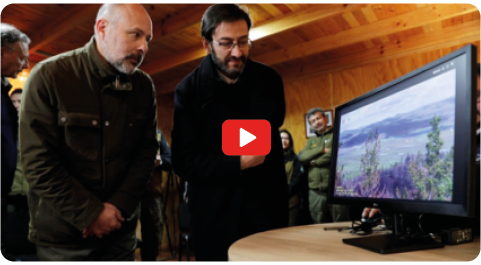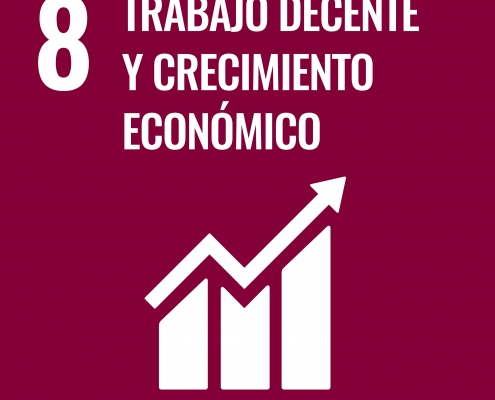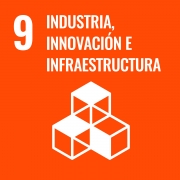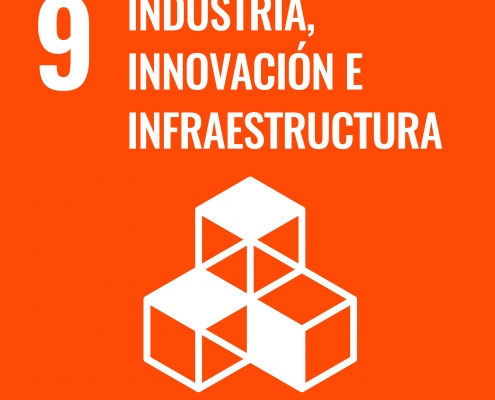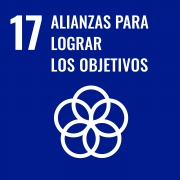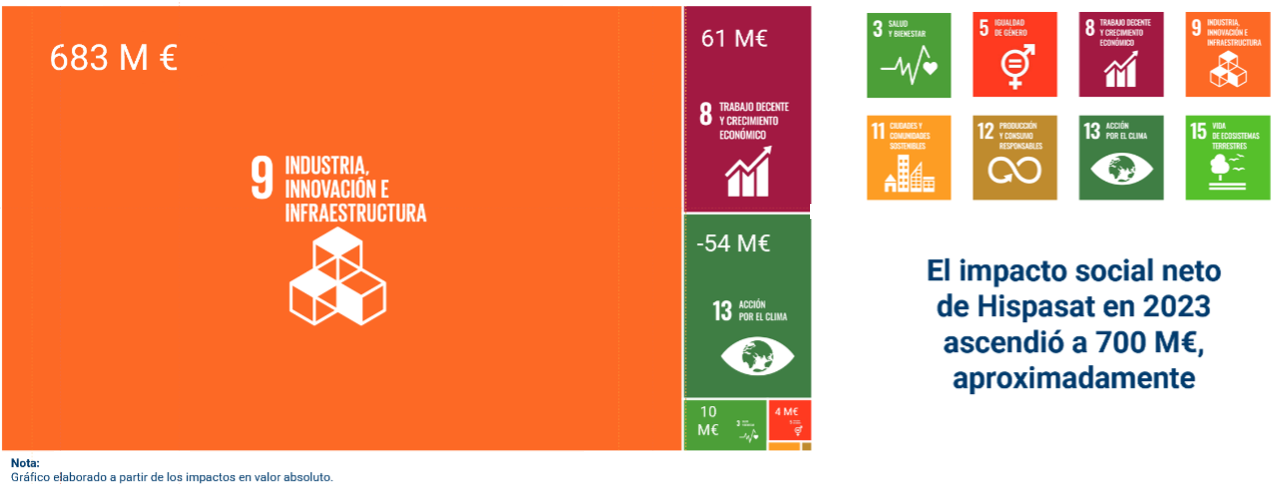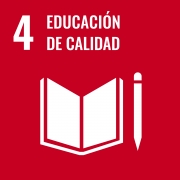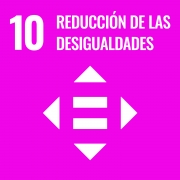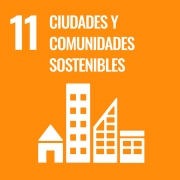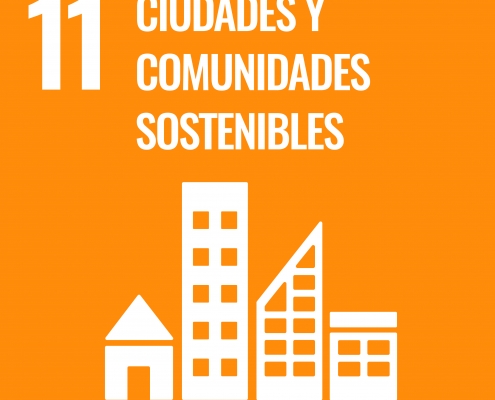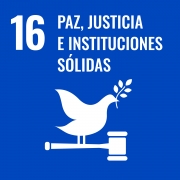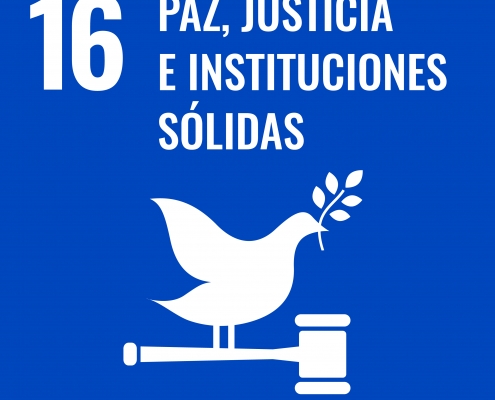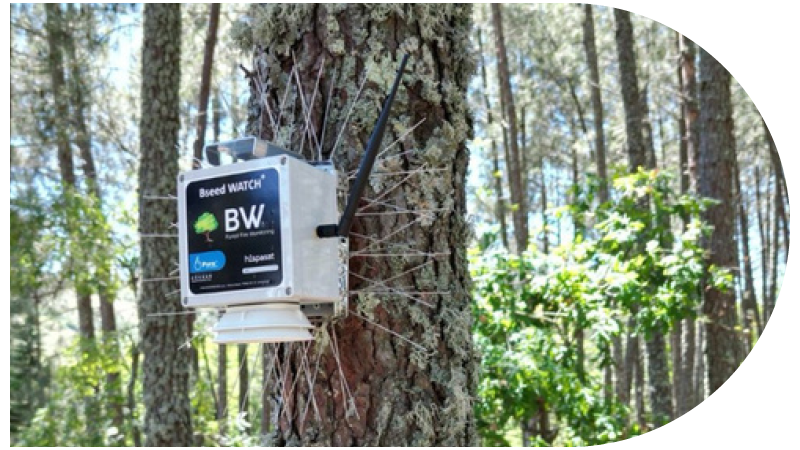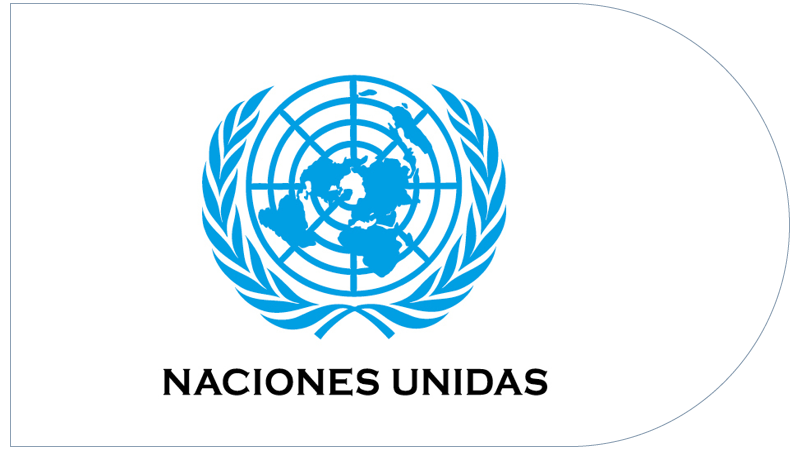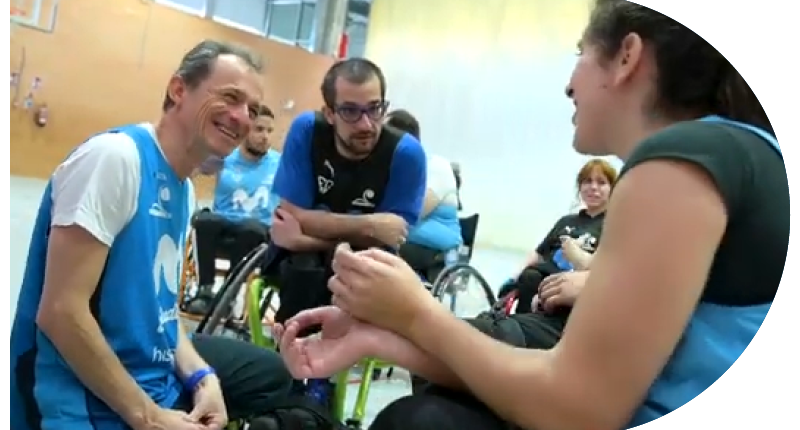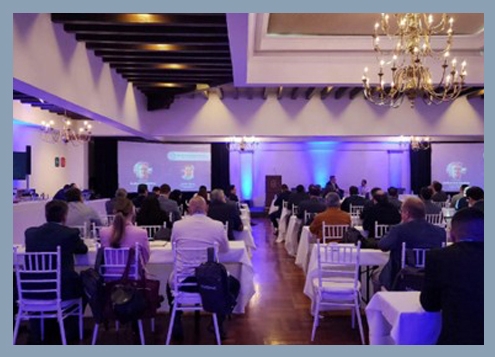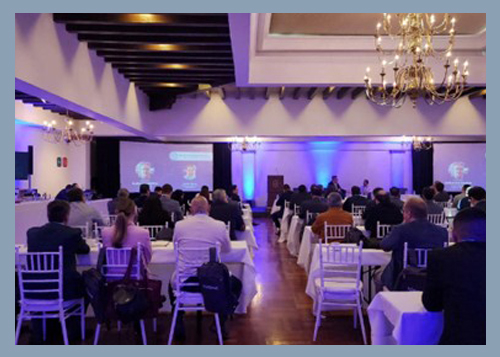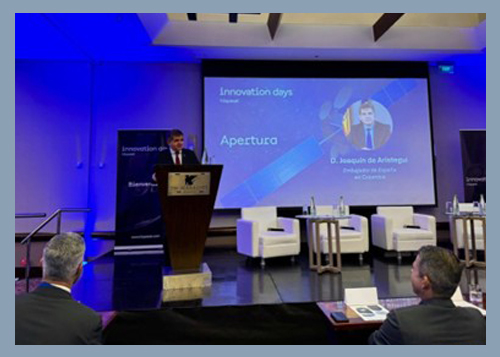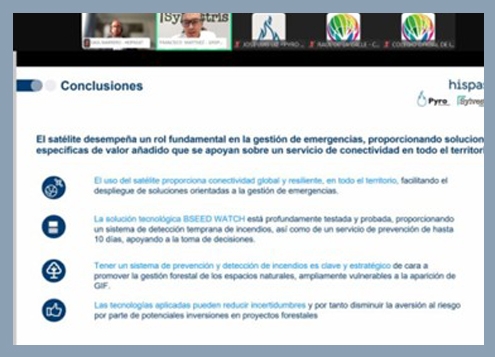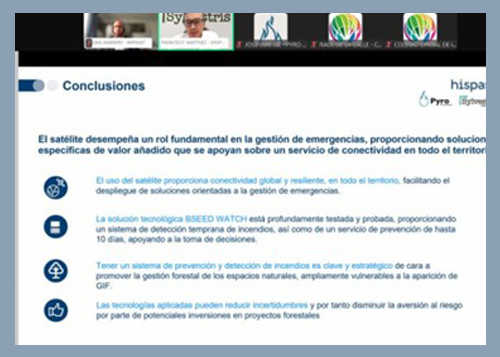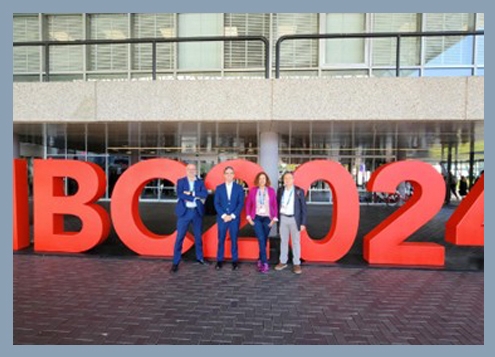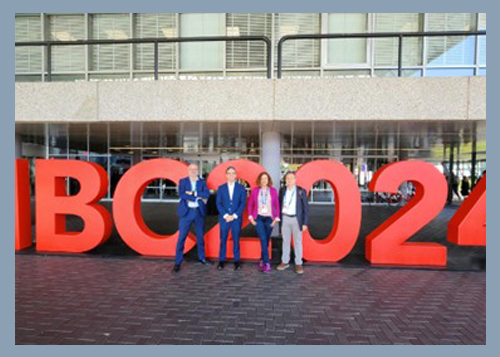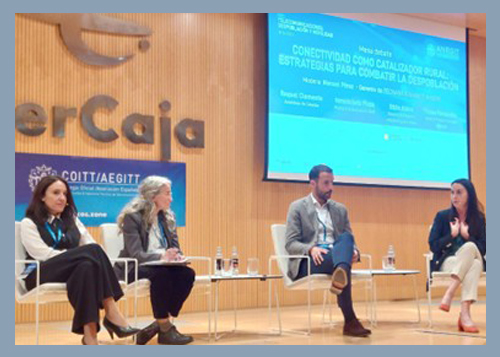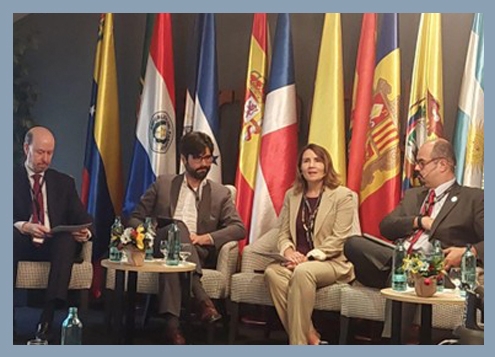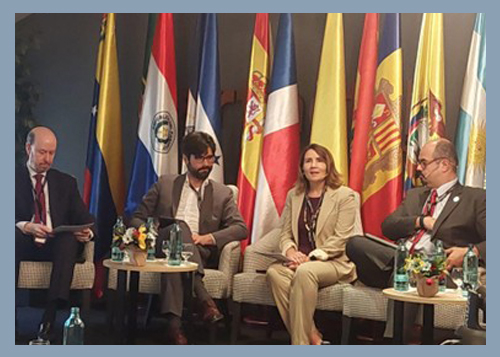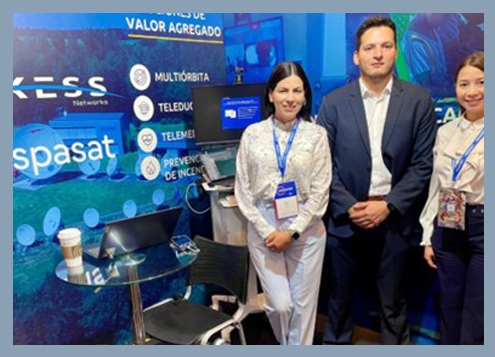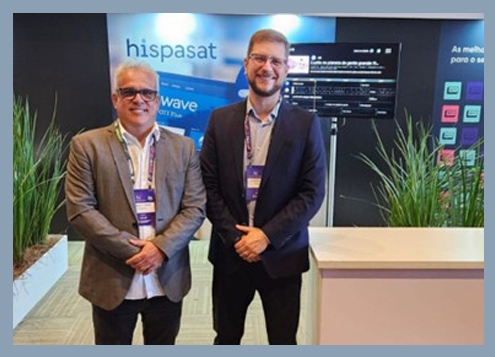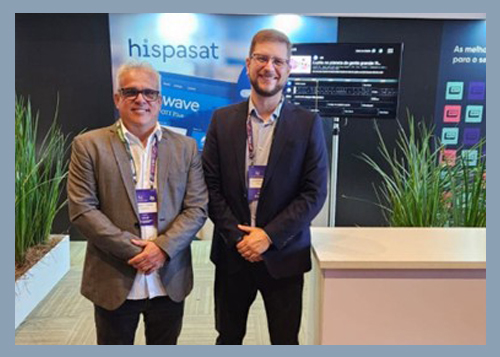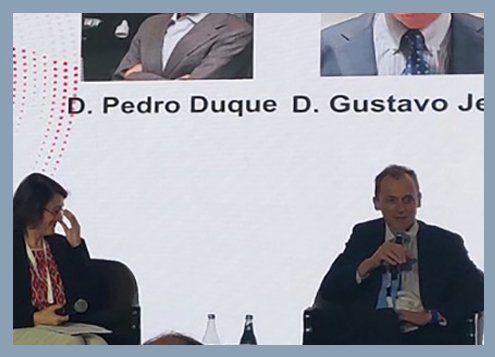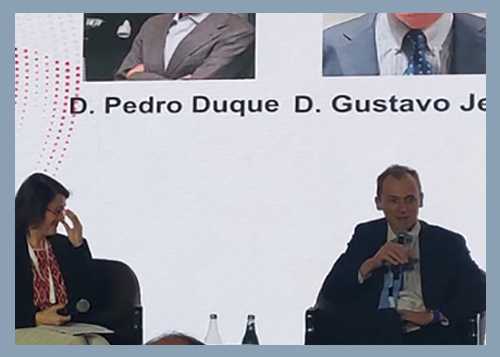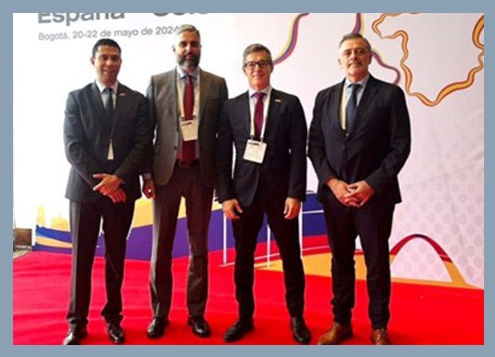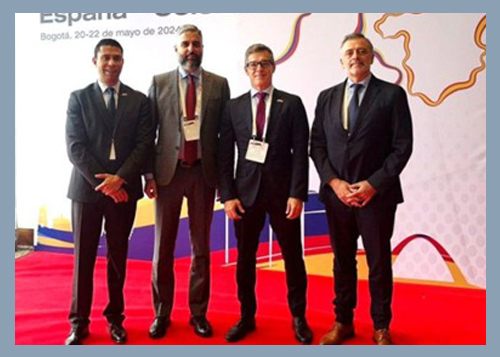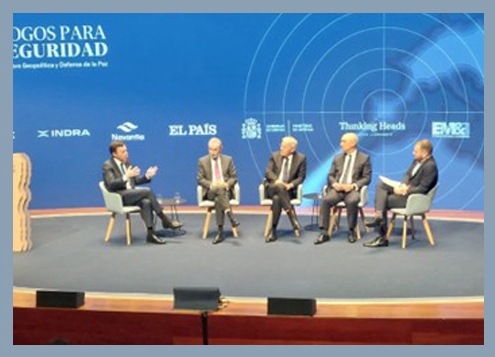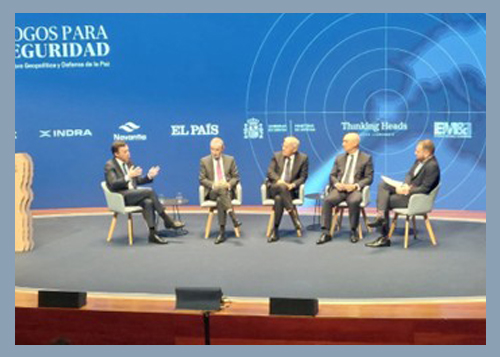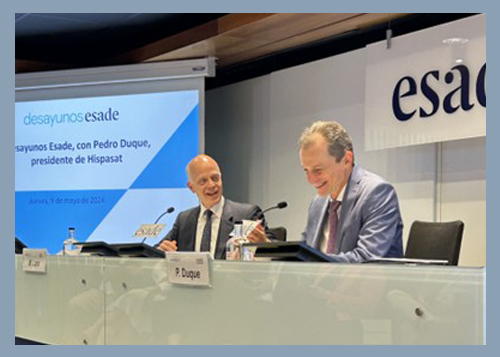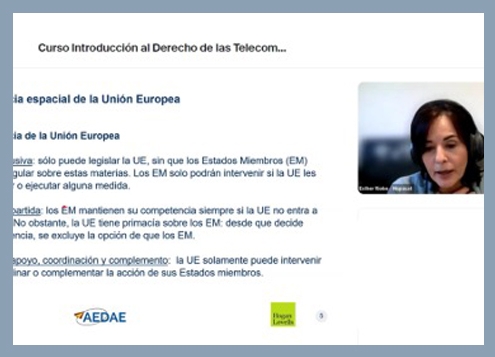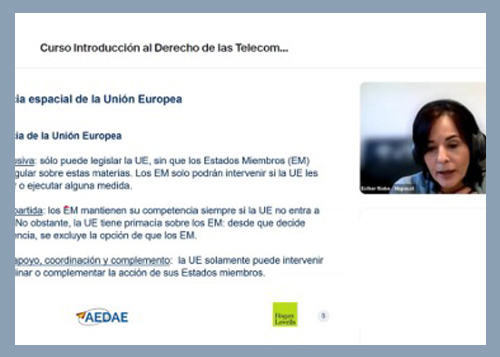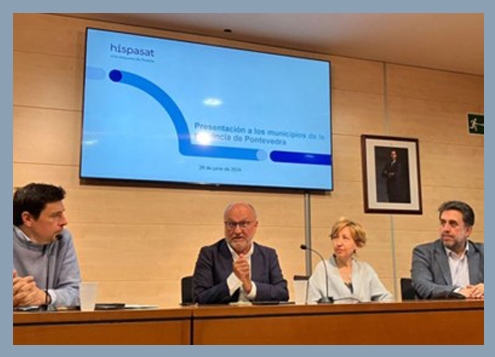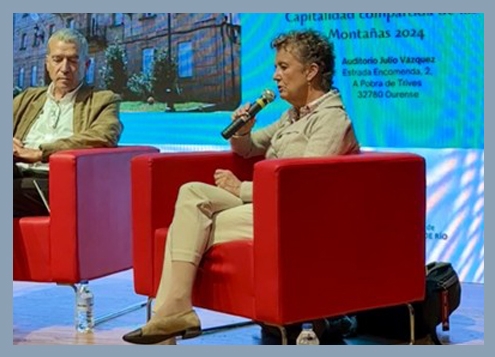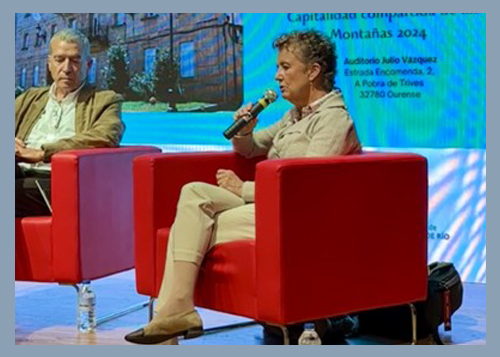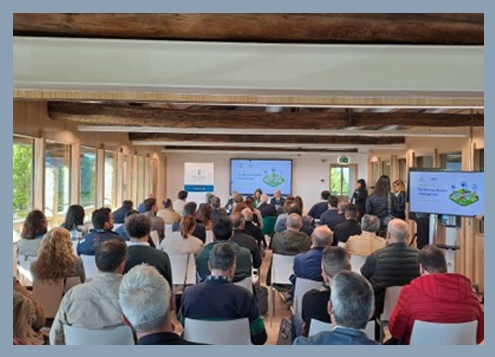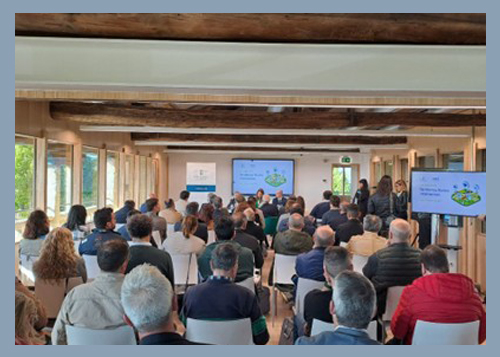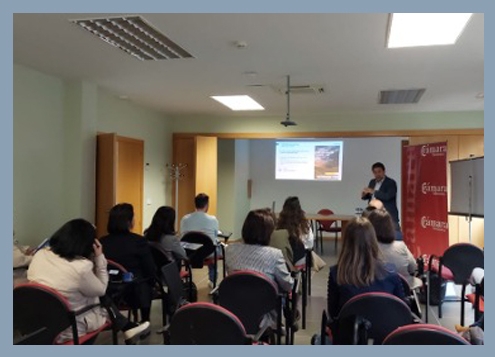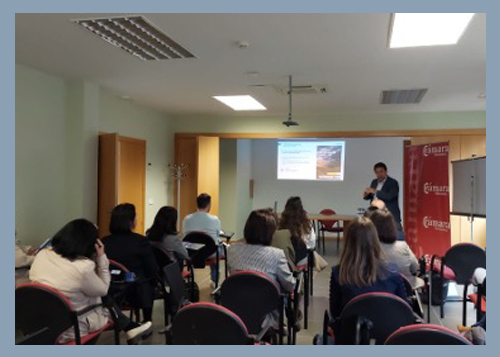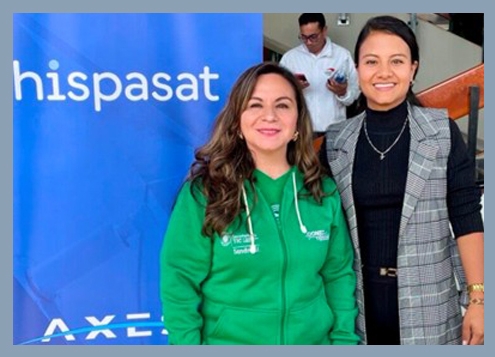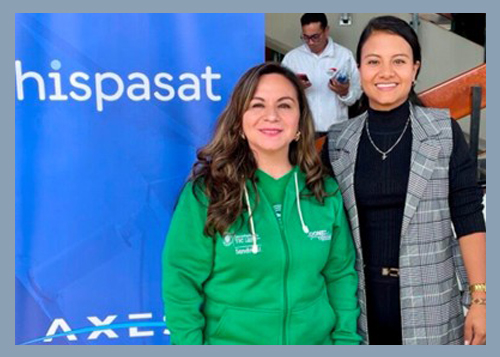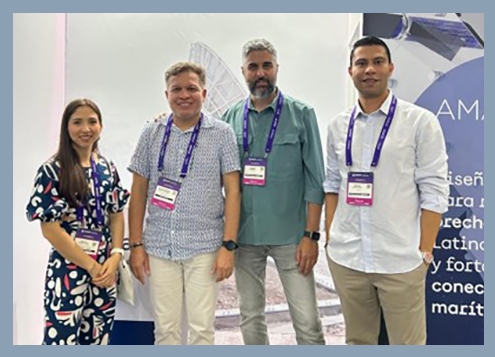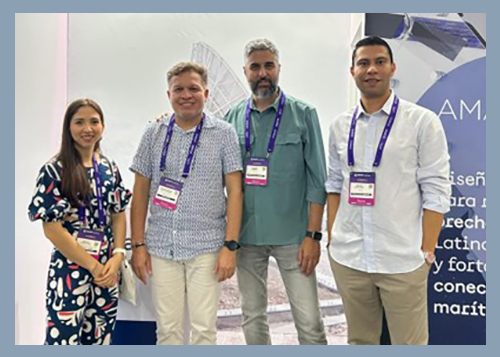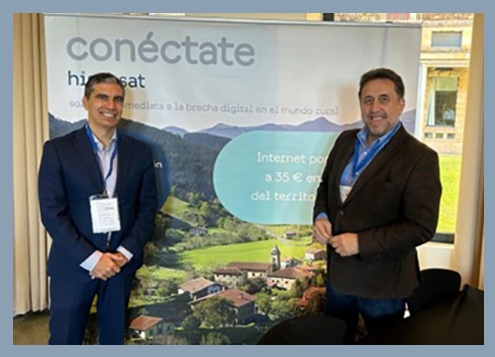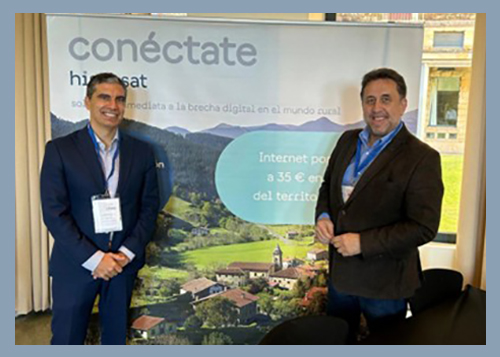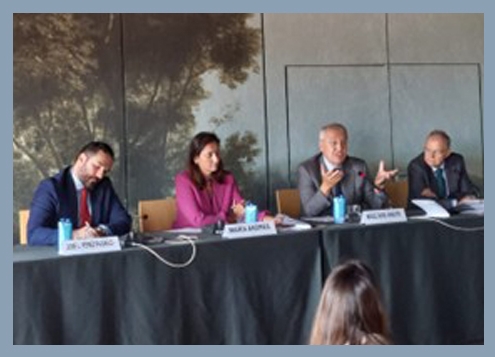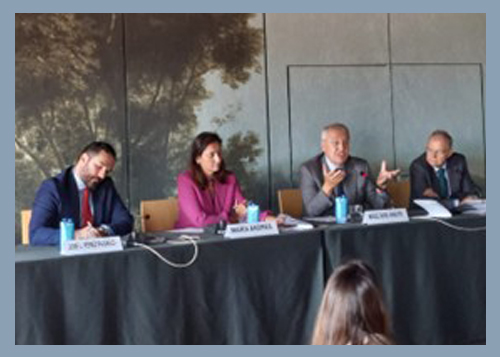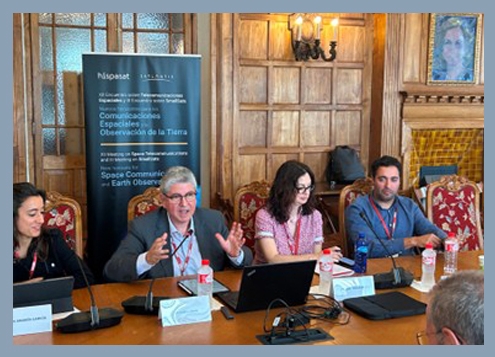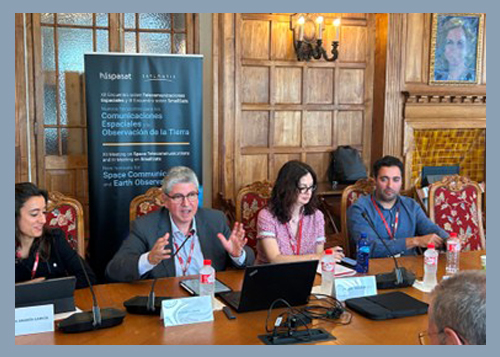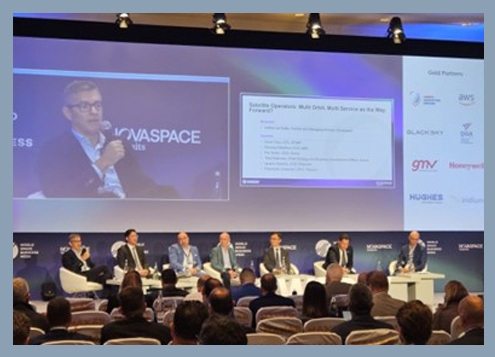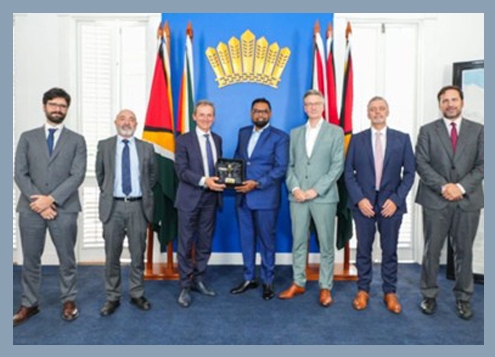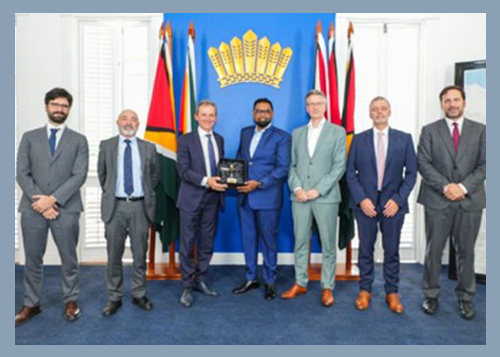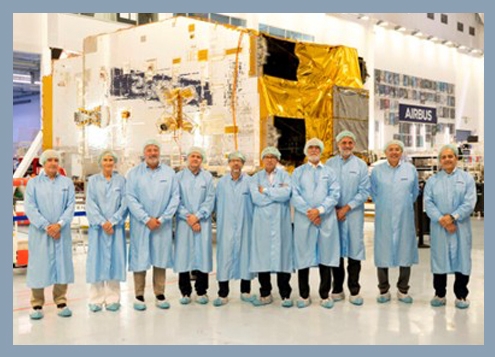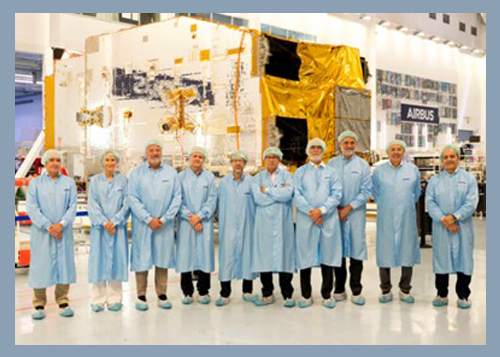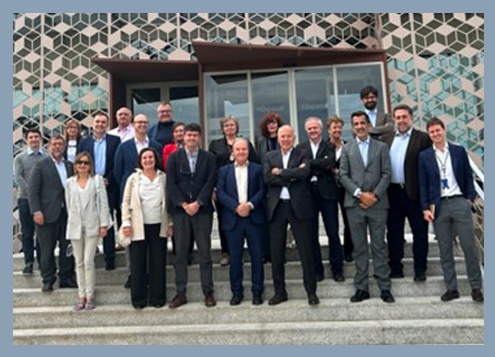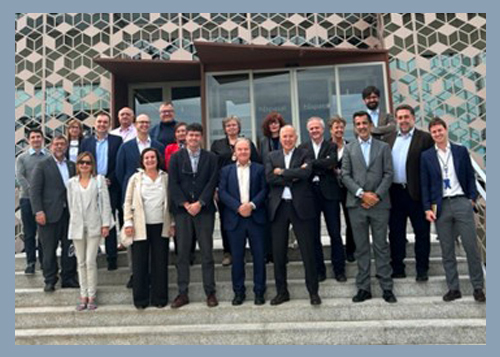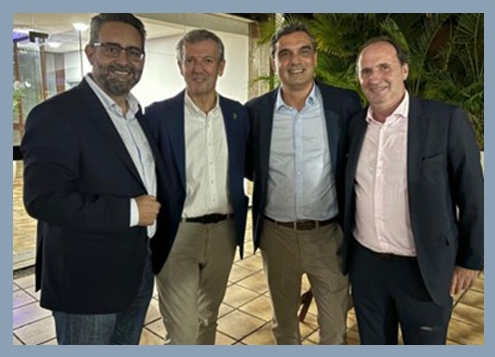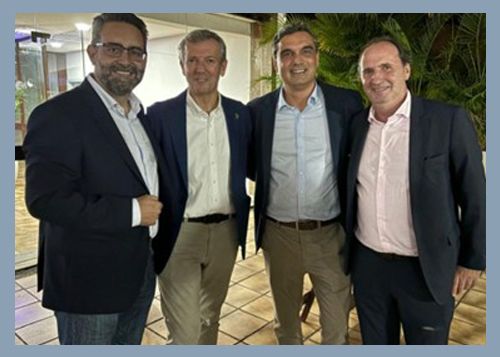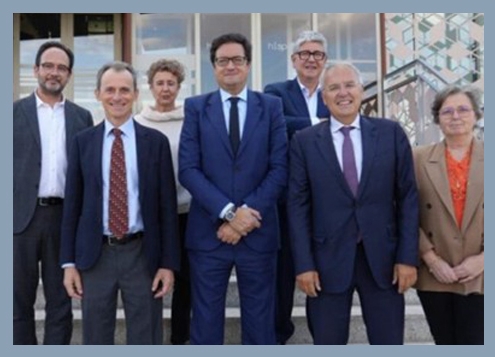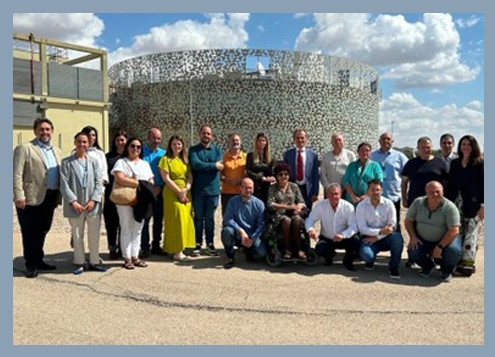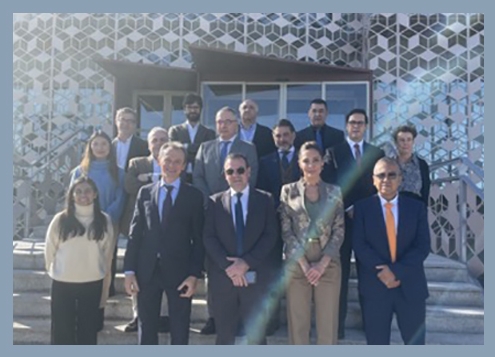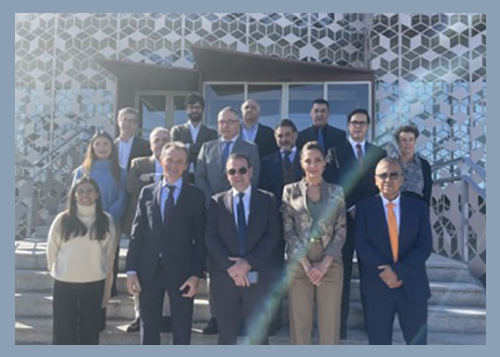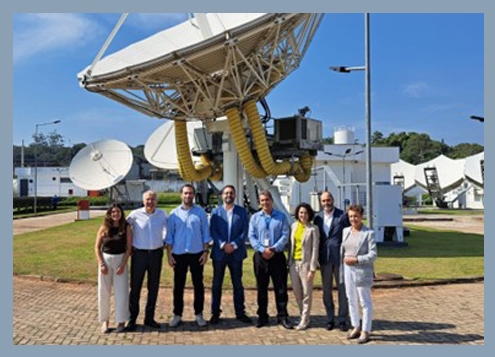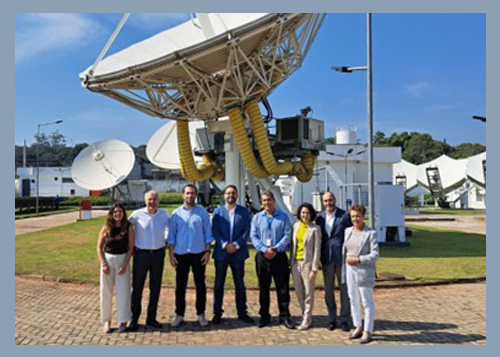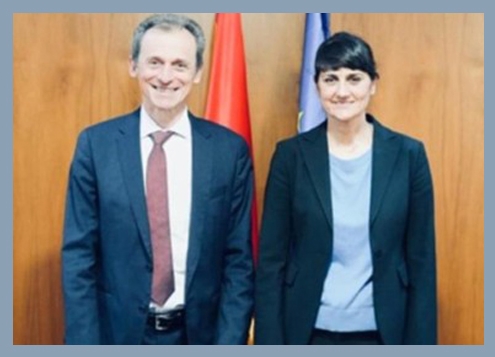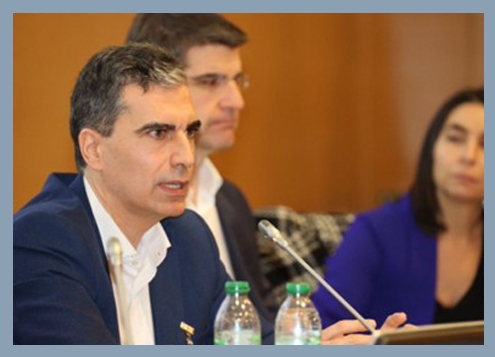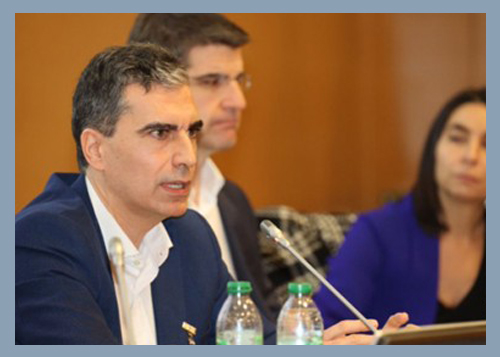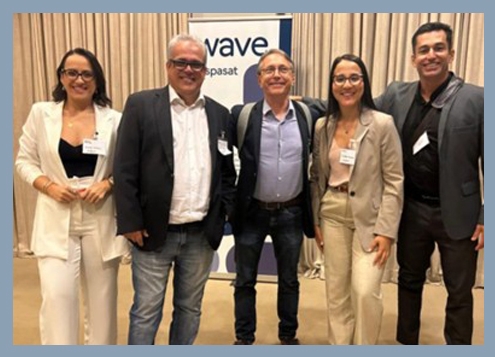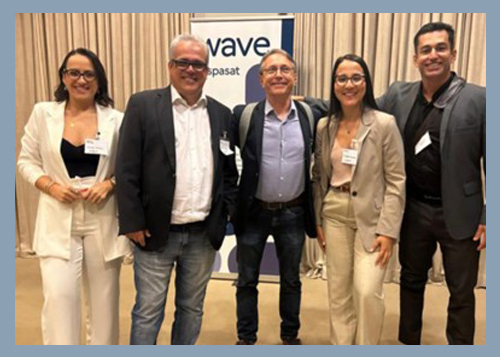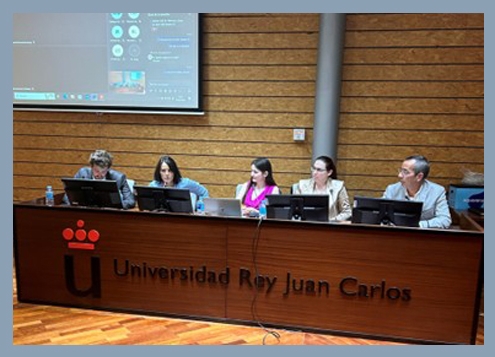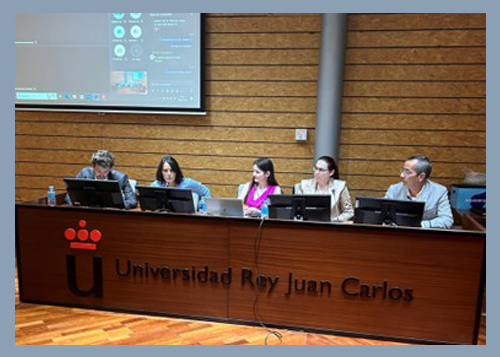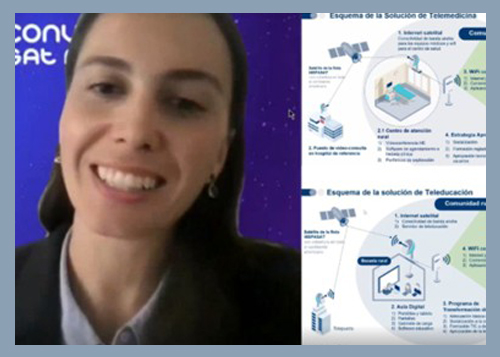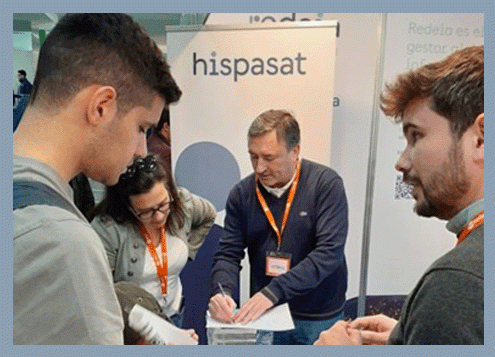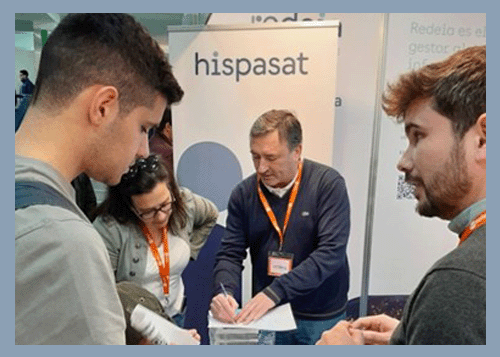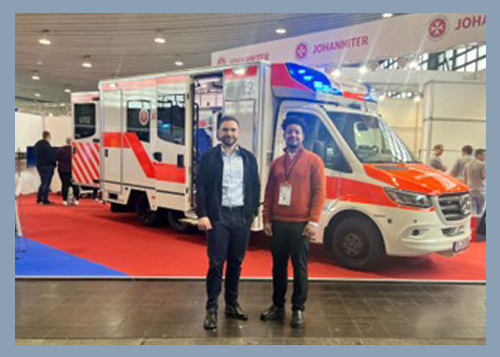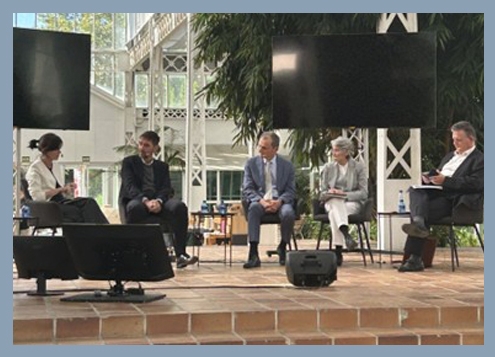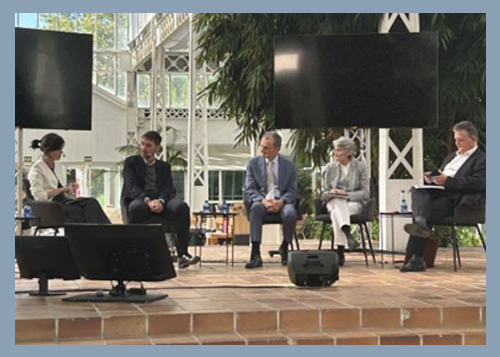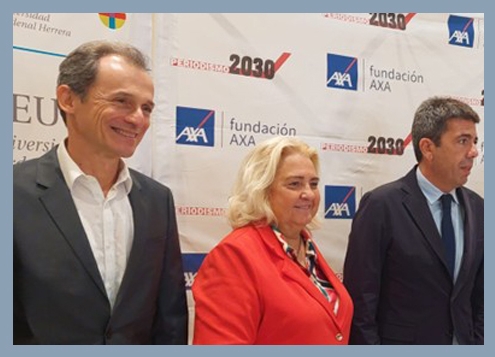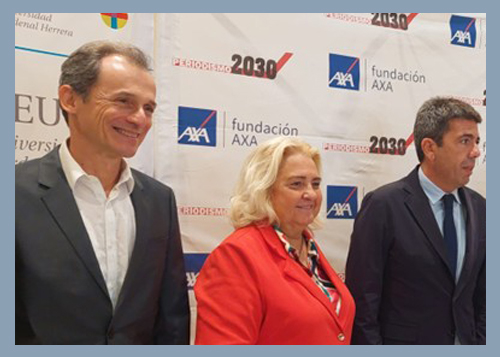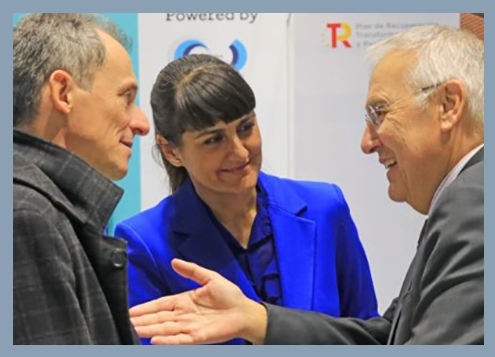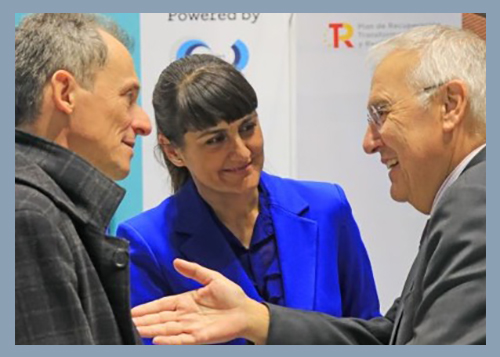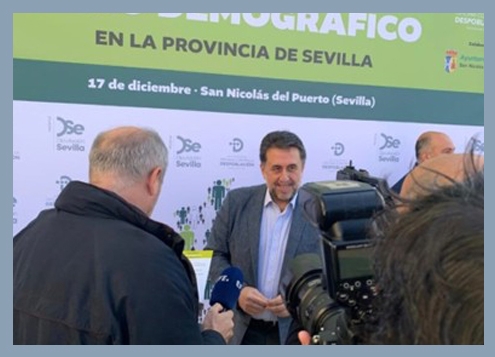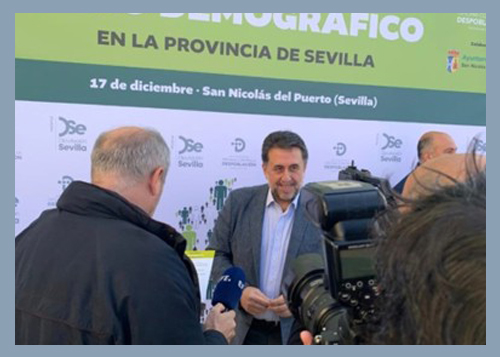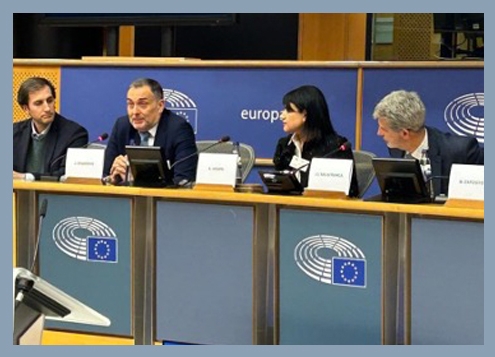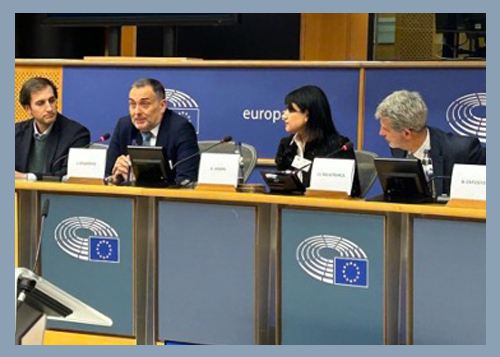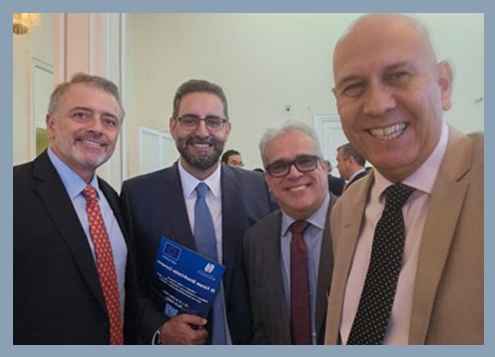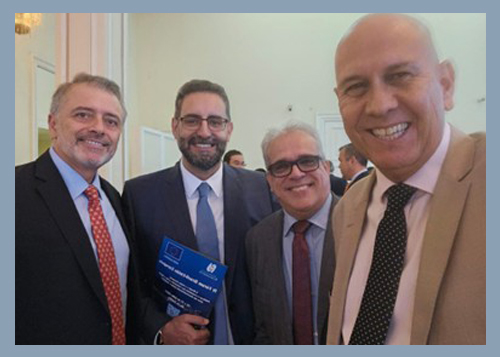Anabel Segura, 11
28108 Alcobendas / Madrid
España / +34 91 710 25 40
Commercial
EMEA
In the video distribution market, in 2024 Hispasat maintained its channel portfolio to distribute content to the Americas and deployed its first channel distribution services in Africa, utilizing third-party capacity and the Axess EMEA teleport infrastructure in Germany. Hispasat also increased its occasional service revenues in 2024.
The maritime business, under the Axess brand, performed well this year, increasing revenue thanks to the extension of a contract with a leading provider of broadcast services to passenger ships.
Furthermore, in 2024, the first maritime connectivity services were launched to European customers in other regions covered by the Amazonas Nexus satellite, such as Antarctica, and services were launched in the Caribbean region with a more flexible business model.
In the security and emergency market, existing wholesale contracts have been renewed, and Hispasat, under the Axess brand, has signed important contracts with several leading corporations in the mining and energy sectors, also reinforcing its commitment to this business vertical in the region. At the national level, Hispasat has continued working on the UNICO Rural Demand program, with new retail operators joining to market this satellite broadband service aimed at areas where there is no access to fixed networks of at least 50 Mbps. Conéctate35 offers users the possibility of contracting a connection with a download speed of 200 Mbps from Hispasat at a fixed price of 35 euros per month, with no additional costs, as well as assistance of up to 600 euros for the cost of installation and equipment.
Also in 2024, the first turnkey projects for fire prevention and early detection in forest environments were deployed in EMEA. The innovative comprehensive solution developed by Hispasat and its partner Pyro combines satellite-connected IoT systems with imaging solutions and an advanced management and decision-making platform. This solution has been deployed in systems reforested by our partner Sylvestris in Spain and Portugal.
Pact for Connectivity:
By signing this Pact, promoted by the Ministry for Digital Transformation and Public Service, Hispasat committed to making every effort to restore the full operation of those communications services, digital infrastructures, and terrestrial broadcasting services that were damaged or interrupted as a result of the DANA.
Hispasat provided a free service for existing satellite connectivity customers, facilitating internet access during these critical times, when the population needed greater contact and when SMEs and self-employed workers needed all the help they needed to rebuild their businesses and move forward after the tragedy.
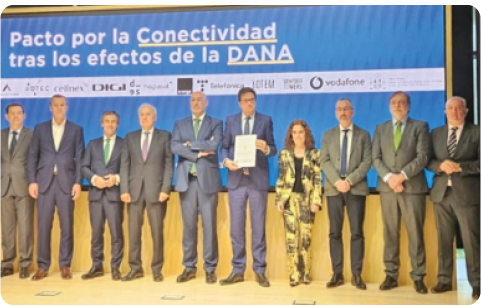
Green Motor:
Banco Sabadell: Hispasat and Banco Sabadell promote digital payment methods in rural Asturias
In its effort to reduce the digital divide and connect the unconnected in any way possible, Hispasat signed an agreement with Banco Sabadell to develop digital payment methods in rural areas.
Banco Sabadell committed to training self-employed workers, cooperatives, SMEs, and rural homes to learn how to use this digital method, while Hispasat would guarantee its operation through satellite connectivity. This agreement ensures that rural and remote areas have equal access to economic activity and the digital financial tools common in larger cities.


AMERICA
In Brazil, Hispasat has signed a partnership with the Brazilian government to collaborate on connectivity for rural schools and health centers, which will result in several hundred connected sites. In addition, the capacity of various Hispasat satellites (in C and Ku bands) leased to Brazilian ISPs and integrators for the provision of connectivity services in the offshore Oil & Gas segment has significantly increased.
The Amazonas Nexus satellite has positively contributed to commercial activity in the Americas, thanks to the full-year contribution from long-term contracts signed with Intelsat. The Amazonas Nexus provides satellite backhaul services in Mexico and has also been used by various US MNOs to provide backup and communications restoration services during the hurricane season.
In 2024, Hispasat renewed part of the capacity used by several global integrators and North American service providers for maritime mobility during the Mediterranean and Caribbean seasons. The first multi-orbit GEO-LEO services have also been deployed in the maritime sector for retail customers in the Gulf of Mexico.
Hispasat has also used the multi-orbit solution in other corporate verticals such as Oil & Gas and Energy, thus responding to the needs of various clients in these verticals.
In the area of connectivity in rural areas, Hispasat has continued to deepen its relationships with several countries in the region. In 2024, it signed three Memoranda of Understanding with the governments of Brazil, Colombia, and Paraguay to explore different cooperation models for bridging the digital divide through satellite use.
In the video market, Hispasat has renewed contracts with its clients for the managed DTH satellite TV service, which it provides from its teleport in Lurín (Peru). In addition, it has boosted the deployment of its white-label OTT service, WAVE OTT+, with the signing of agreements that contribute to strengthening this line of business.
Agreement with the Brazilian Government: Hispasat signs an agreement with the Brazilian government to boost satellite infrastructure in the country
In 2024, Hispasat signed an agreement with the Brazilian government to collaborate in the analysis of Brazil’s satellite connectivity needs.
In addition, the possibility of jointly developing space infrastructure aimed at reducing the digital, educational, and healthcare gap in the most remote and disadvantaged areas of the country will be explored. Specifically, the satellite could connect 140,000 rural schools.
Since 2001, the year its Brazilian subsidiary was created, Hispasat has demonstrated a strong commitment to the country, confirmed by each new satellite in its Amazonas fleet, located at 61° West, a Brazilian position over which it holds orbital rights.
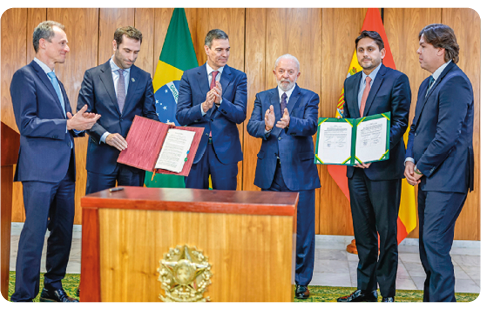
Satellite Telemedicine in the Galapagos Islands:
![]()
Early Fire Detection in Chile: Hispasat Presents a Project for Early Fire Detection in Chile with Pyro
The Chilean National Forestry Corporation (CONAF) presented, in 2024, the pilot project that Hispasat has launched together with Pyro Fire Extinction in the Lago Peñuelas National Reserve in Valparaíso, to prevent and detect forest fires early through satellite connectivity.
Specifically, Bseed WATCH sensors and panoramic video cameras have been deployed, covering a perimeter of 35 kilometers and an area of 6,189 hectares. From their locations, they continuously collect information on various environmental variables—such as temperature, relative humidity, CO2, wind speed and direction, and pressure, among others—and transmit it to a central location, which sends it in real time to the cloud via satellite.
This information—combined with video camera images, weather conditions, and satellite images of the surrounding areas—is processed into a real-time risk map for the next ten days.
Through a notification system, CONAF personnel will be sent the most relevant information and will be alerted when the fire risk increases or when a fire is detected by sensors.

Innovation

GOVSATCOM HUB
As part of the global IRIS2 architecture, a pool and share system is being developed that will orchestrate user needs and existing satellite capabilities in Europe for government services.
In 2024, a national consortium led by GMV and with the participation of Hispasat, along with other companies such as Indra and Hisdesat, was awarded the program.
Hispasat is working on defining this system, contributing, among other aspects, knowledge from the operator’s perspective. Participation in this program positions Hispasat as a benchmark in the provision of GOVSATCOM capabilities (secure government communications) and is aligned with initiatives such as the Operations Support System/Business Support Systems (OSS/BSS).
In addition to the GOVSATCOM program, and in line with its positioning in IRIS2, Hispasat is increasing its presence in the field of secure communications by participating in various projects related to this area. This is the case with the European Protected Waveform consortium, funded by the European Defense Fund (EDF), and the 5G-HUB project, funded by EUSPA and focused on developing 5G NTN-based use cases for government end-users.
It is also worth noting that Hispasat has increased its presence in the field of security at the European level, participating in groups such as the EU ISAC, which is dedicated to sharing threat information.

5G: Hispasat is developing its 5G strategy along the following lines of work:
- Enabling the use of 5G NTN: Hispasat has continued its participation in Horizon Europe projects (5G-STARDUST and TRANTOR) and the Recovery Plan (AROMA 3D). The TRANTOR project highlights the completion of the first 5G NTN transmission in Europe with a Hispasat satellite, a milestone that positions the company as a pioneer in the adoption of 5G NTN.
Furthermore, it has successfully completed the 5GMED project and is part of an additional Horizon Europe project, UNITY-6G, which provides continuity to TRANTOR and 5G-STARDUST.
- Developing new 5G services by vertical and new 5G NTN-based infrastructures: The launch of backhaul-focused projects for 5G NTN mobility services is currently underway, as well as actively monitoring the various Direct-to-Device initiatives. In addition, Hispasat participates in 5G-related forums, with a special emphasis on 3GPP, and is part of the steering committee of the NTN Forum, the body that coordinates the space sector’s position on 5G.

Hispasat is participating in CARAMUEL, a pioneering project in the development of a quantum key distribution (QKD) payload for a GEO satellite. This project marks the starting point for Hispasat to become the first company in the world to develop this type of technology in GEO orbits, which offer greater availability and the capacity to provide a global service with just three satellites. Hispasat has led the feasibility phase in previous years, with 20 Spanish partners spanning the entire value chain, including companies in the aerospace sector, cybersecurity companies, public institutions, universities, telecommunications and telecommunications infrastructure operators, and financial institutions.
In 2024, progress was made in the development of this pioneering system thanks to the award of funds associated with the Aerospace PERTE (Perte Aerospace Project). This has allowed the requirements establishment and pre-design phases to continue with the development and manufacturing of the QKD payload during 2025 and 2026.

Extraterrestrial exploration initiatives are growing, and more than 400 space missions to the Moon are expected in the next 10 years. These missions will require communications systems. The European Space Agency (ESA) is working on the development of a communications system to support these missions. Hispasat, within an international consortium, began work on Phase I of the Moonlight – LCNS project, which seeks to consolidate the requirements at the system and subsystem level, with the aim of reaching design closure as the final milestone in mid-2026. The work carried out during 2024 has focused mainly on activities to define the system’s external interfaces to communicate and provide services to users (ESA, NASA, JAXA, etc.) and on the development of ground segment components, also including work related to project management and quality control of the solution.
Sustainability
In 2024, Hispasat continued working on the 2023-2025 Sustainability Plan, comprised of 14 lines of action. The company identified those in which it adds the most value. This plan aims to ensure responsible business management and advance the Group’s sustainability objectives and priorities, thereby responding to the main expectations and demands of its stakeholders. These commitments, grouped into various lines of work in the area of sustainability, allow Hispasat to address the challenges facing the organization and realize existing opportunities, thereby occupying a leading position in the global business environment.
Boosting the Spanish space industry
Hispasat facilitates the Spanish industry’s access to international telecommunications satellite markets, incorporates components manufactured in Spain in all its missions, and allows Spanish companies to validate their new satellite equipment by embarking it on its satellites. Furthermore, it promotes an industrial returns program that commits its manufacturers to continue investing in Spanish technology in the years following the construction of each of its satellites, which has generated more than €1 billion in committed investment from major international manufacturers in Spain.

Bridging the digital divide and accessing the information society in unconnected areas
Social impact of Hispasat’s activities
he satellites in Hispasat’s fleet provide the necessary boost to the populations and local economies of rural areas within its coverage footprint to interact with the world and access online resources—economic, educational, healthcare, etc.—similar to those available in urban areas. They constitute an essential tool for bridging the digital divide, increasing the productivity of the local economy, halting depopulation, and advancing social cohesion, while allowing the company to contribute, directly and indirectly, to the sustainable development of society in general, and its stakeholders in particular. In order to obtain an initial assessment of this contribution that serves as a reference for Hispasat in making strategic decisions aimed at managing and improving the organization’s impact on people and the planet, in 2024 Hispasat completed the first measurement of the social impact of its activities in the community.
The measurement has been carried out throughout the entire value chain—supply chain, own operations, environment, and society—using methodological bases and reference frameworks from prestigious institutions such as Harvard University and the World Business Council for Sustainable Development (WBCSD). The result of this initial work confirms that Hispasat’s main positive social impact falls within the priority of “Contributing to the development of the environment” thanks to connectivity. The impact on innovation is also very positive, contributing a total of nearly €700 million to the development of society.

Democratization of Technology and Inclusion
To facilitate access from rural areas with difficult access or connectivity issues, Hispasat maintains various pilot initiatives and services deployed in Spain and Latin America.
- Aran Valley. Connection to the Artiga de Lin refuge in Vielha to facilitate management of the facility, user connections, and the deployment of an intercom and webcam with direct connection to 112. The service also provides Wi-Fi HotSpot connectivity in the refuge’s area of influence, from which a safe emergency point can be established and hikers can check the status of the trails. Along with these services, the deployed infrastructure will allow the refuge to have a LoRa wireless network access point for connecting sensors and other IoT devices for monitoring livestock or people.
- Sigüenza (Guadalajara). Deployment of connectivity to different districts of La Cabrera, Moratilla de Henares, Pelegrina, Olmedillas, Torre Valdealmendras, and Cubillas del Pinapedanías with the goal of providing them with a public building with free and open broadband connectivity. The solution guarantees connectivity to an area of up to 150 meters from the transmission point.
The installed technology also enables residential internet access, with private contracts, with download speeds of up to 100 Mbps and upload speeds of 5 Mbps.The deployment in this region is complemented by a satellite-based digitalization solution that will quantify the flow of people along the Dulce River path and the available parking spaces. The information will be available in an app, accessible both for informational purposes by any resident or visitor, and for administrative purposes by the Sigüenza City Council. - Correos Group. Pilot project to connect via satellite those offices located in towns with limited internet access. Thanks to satellite connectivity, the selected offices can be incorporated into the Correos computerized network, thus improving their efficiency and agility and expanding their service offering. All mail and parcel reception and delivery operations will be recorded in a system that allows for better identification and tracking of shipments. On the other hand, the technological connection to the branch network will facilitate real-time transactions such as immediate transfers, sending money abroad, collecting energy company bills, topping up prepaid cards, dealing with the DGT (Directorate-General for Transport), or withdrawing and depositing funds into bank accounts.
- Galapagos Islands (Ecuador). Donation to the Ecuadorian government of a telemedicine service in the Galapagos Islands, connecting the Puerto Villamil Health Center (Isabela Island) with specialist physicians at the Monte Sinaí General Hospital in Guayaquil. Thanks to its deployment, the communities that rely on this health center have improved quality healthcare, reducing the number of air or river trips a patient must make between islands to receive priority or high-risk assessments and care. The service helps anticipate potential tragedies due to a lack of high-level care.
- Arequipa, Cusco, and Puno (Peru). Satellite connectivity program, developed by Redinter in partnership with Hispasat, for nine municipalities in areas directly affected by high-voltage lines, benefiting more than 1,300 residents, who can access free satellite internet in the main squares of each community.
- Chile. Provision of internet and telephone services in two communities (Copaquere and Tamenrica) located in the Antofagasta region, with a population of 1,000,000 and 70,000, respectively.
- Mexico. Hispasat and the multinational solutions and managed services integrator Sencinet offer connectivity services for the corporate and government sectors in Mexico. Since June 2021, both companies have provided critical communications to large companies and public buildings of the Mexican Federal Government in rural areas of the country.

Forums and Associations
Secretary of State for the Information Society and Digital Agenda
Hispasat collaborates both bilaterally and by participating in multilateral preparatory meetings for international conferences and forums that affect the company.
National Telecommunications Agency (ANATEL)
In Brazil, the company participates in the sessions of the Radiocommunication Rapporteur Group 2 – Satellite Services (RRG2), organized by the Agency, and in the work related to the deployment of new mobile services and their impact on satellites.
International Telecommunication Union (ITU)
Hispasat has participated in the ITU Council, the highest body of this organization between conferences, at the invitation of the Spanish government and as a member of the radiocommunications sector and satellite operator governed by Spanish law, and in working groups organized by the organization.
Inter-American Telecommunication Commission (CITEL)
Hispasat participates in the Radiocommunications Committee (including broadcasting) PCC-II.
European Conference of Postal and Telecommunications Administrations (CEPT)
Hispasat participates in the Electronic Communications Committee (ECC), the Conference Preparatory Group (CPG), and its working groups.
Inter-American Association of Telecommunications Companies (ASIET)
As an associate and Council member, Hispasat participates primarily in its General Assembly, the Board of Directors, the Regulatory Committee, and operator meetings.
Global Satellite Operators Association (GSOA)
The company participates in the Council’s work, in the Association’s working groups, and in meetings with the European Commission.
Union of Satellite Operators, Brazil (SINDISAT)
The company actively participates in working groups that, among other things, establish joint comments on ANATEL’s public consultations.
Brazilian Satellite Operators Association (ABRASAT)
Hispasat is a member of the Association’s board of directors and participates in its activities.
Madrid Aerospace Cluster
Hispasat is a member of this cluster, which includes more than 50 innovative companies in the sector.
European Telecommunications Standards Institute (ETSI)
Hispasat attends the meetings of this institute, which is responsible for developing globally applicable standards related to information and communications technology.
Digital Video Broadcasting (DVB)
The company participates in promoting internationally accepted TV standards.
Space Data Association
Hispasat participates in this association, which is responsible for the conservation of the space environment and radio frequency spectrum.
Spanish Association of Defense, Aeronautics, and Space Technologies (TEDAE)
Hispasat is a member of the association and sits on the Space Committee.
UHD ALLIANCE
Hispasat participates in the Association’s activities.
Official College of Telecommunications Engineers (COIT)
Hispasat participated in the awards ceremony for young engineers awarded by the Official College of Telecommunications Engineers to the best doctoral theses and projects in a career, sponsoring two of the awards.
AMETIC
HISPASAT is a member of the Association of Electronics, Information Technology, Telecommunications, and Digital Content Companies
National Federation of Telecommunications Installations and Integrators (FENITEL)
Hispasat participated in the annual Assembly organized by the Federation.
Brazilian Telecommunications Association (TELEBRASIL)
Hispasat is a member of the association that brings together operators and service providers in the communications and information sector to defend their interests and development.
Spanish Aerospace Technology Platform
HISPASAT participates in the working groups and forums organized by the platform.
WOMEN IN AEROESPACE
HISPASAT has joined Women in Aerospace (WIA), an association dedicated to increasing the leadership capabilities and visibility of women in the aerospace community.
World Teleport Association
HISPASAT is a member of the World Teleport Association.



